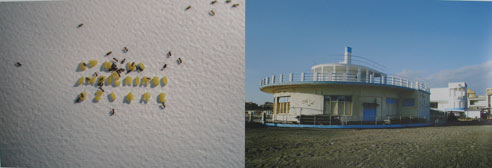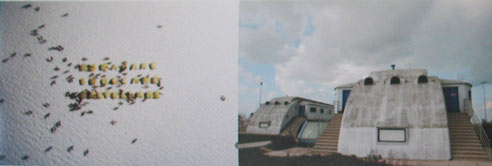Childhood memories
Cath Keay
Childhood memories, fixed through play, amusement, or surprise, define the limits of lived reality. The 1930s are the decade furthest in the recall of most our oldest relatives and acquaintances, a moment of utopian thought that subsequently hardened into dogma. I researched Italian seaside Colonie from this era as vivid architectural forms expressing the recollections of some generations ago. They show a playful innocence in the shadow of impending war and upheaval, mirroring the Futurists’ transformation of engineering feats into aesthetic ends in themselves. In Calambrone, the Colonia Principe di Piemonte takes the form of an aeroplane if viewed from above, an architectural embodiment of the contemporaneous Futurist aeropitture. In Cattolica, dormitories suggesting streamlined trains or beached ships welcomed expatriate children.

